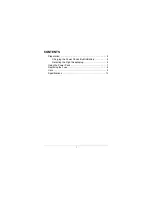
Page 59
EPS Stromversorgung GmbH
Alter Postweg 101 • 86159 Augsburg
Germany
Fon: +49 821 / 570451-0
Fax: +49 821 / 570451-25
PSI 9000 3U Series
3.9.4 Manual operation
3.9.4.1 Function selection and control
Via the touchscreen one of the functions described above can be called up,
configured and controlled. Selection and configuration are only possible when
the output is switched off.
►
How to select a function and adjust parameters
1.
Tap the touch area
on the main screen. If the menu does not appear it is because the DC
output is still switched on or the touch area is locked due to the device being possibly in remote control.
2.
In the menu overview tap on the touch area
and then on the desired function.
Note: this touch area is locked in master-slave mode or in R mode (adjustable resistance).
3.
Depending on the choice of function there follows a request to which value the function generator is going
to be applied:
or
.
4.
Adjust the parameters as you desire, like offset, amplitude and frequency for a sine wave, for example.
5.
Do not forget to adjust the overall limits of voltage, current and power, which you can access with touch
area
.
When entering function generator mode, those limits are reset to safe values, which can
prevent the function from working at all. For example, if you apply the selected function
to the output current, then the overall current limit should not interfere and should at least
be as high as amplitude.
Setting the various functions is described below. After setting it up, the function can be loaded.
►
How to load a function
1.
After setting the values for the required signal generation, tap on the
touch area
.
The device will then load the data into the internal controller and changes the
display. Shortly afterwards the static values are set (power and voltage or cur
-
rent), the DC output is switched on and the touch area
enabled.
Only then can the function be started.
The static values are applied to the DC output immediately after loading the function, because it
switches the DC output on automatically in order to settle the start situation. These static values
represent start and end values for the progress of the function, so that the function does not
need to start from 0. Only exception: when applying any function to the current (I), there is no
adjustable static current value, so the function would always start from 0 A.
















































